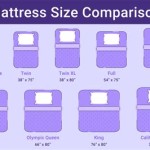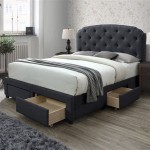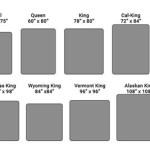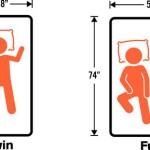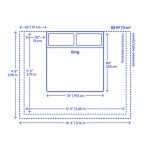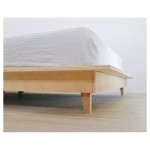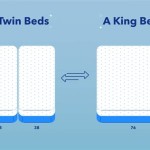Understanding the Dimensions: What Size Bed Is 90x90?
The question of what size bed a 90x90 dimension represents requires careful consideration as it depends heavily on the unit of measurement used. Without specifying the units, the dimensions are meaningless. The most likely units in a bedding context are centimeters (cm) or inches (in). A 90x90 measurement in centimeters is significantly different from a 90x90 measurement in inches, leading to drastically different bed sizes. This article will explore both scenarios, detailing what each size represents and how it compares to standard bed sizes globally.
Furthermore, it is crucial to understand that bed sizes can vary slightly between manufacturers and countries. Standardization is not absolute, and minor differences can exist. Therefore, when discussing specific dimensions, it's important to consider these potential manufacturing variations and the overall impact on bedding selection, room planning, and comfort.
We will analyze the implications of a 90x90 cm bed, considering its suitability for different individuals and room sizes. We will also examine what bedding and accessories are appropriate for this particular dimension. Then, we will shift our focus to a 90x90 inch bed, analyzing its significance and suitability in contexts where inches are the standard unit of measurement. Understanding the nuances of each dimension unlocks the ability to choose the appropriate bed based on needs and available space.
Scenario 1: 90x90 Centimeters
If the dimensions 90x90 refer to centimeters, this translates to a bed that is 90 cm wide and 90 cm long. To convert this to feet and inches for a broader understanding, we can use the conversion factor of 1 cm approximately equal to 0.3937 inches. Therefore, 90 cm is approximately equal to 35.43 inches, or roughly 2 feet and 11.43 inches. This would result in a bed approximately 2 feet 11.43 inches wide and 2 feet 11.43 inches long.
A bed with these dimensions is exceptionally small. It is not a standard size for any adult bed. Such dimensions are much more commonly associated with cot beds for infants or very small children. It would not be suitable for a teenager or an adult individual due to the restricted length. The width is also considerably restrictive, limiting freedom of movement during sleep.
In terms of bedding, finding commercially available sheets and duvets perfectly sized for a 90x90 cm bed might be difficult. Custom-made bedding or adaptations of smaller cot bedding might be required. The design of the bed itself may need to be custom made or chosen from a very limited selection of cots or similar infant beds.
The use case for a 90x90 cm bed is very specific. Its main purpose would be to accommodate infants or toddlers in their early years. Placing this bed is restricted solely to nurseries or small rooms designed for young children. Therefore, knowing these dimensions equates to a baby or toddler bed is important to avoid improper purchases.
When considering a 90x90 cm bed, the material of the bed frame and mattress matters greatly. It should be hypoallergenic and suitable for young children. The mattress should be firm and supportive to ensure the baby's safety and proper development. Breathable materials are also favored to prevent overheating and reduce the risk of Sudden Infant Death Syndrome (SIDS).
Scenario 2: 90x90 Inches
Conversely, if 90x90 refers to inches, the bed dimensions are significantly larger. Converting inches to feet, we find that the bed would be 7.5 feet wide and 7.5 feet long (since 12 inches equals 1 foot). This equates to 228.6 centimeters by 228.6 centimeters. Such a size greatly exceeds any standard bed size currently available on the market.
A bed measuring 90x90 inches is unusually large. No standard bed size matches these dimensions. To put this in perspective, a standard King size bed in the US is approximately 76 inches wide and 80 inches long. A California King is approximately 72 inches wide and 84 inches long. The 90x90 inch dimensions exceed even the largest commonly available sizes by a significant margin.
The suitability of such a large bed would be limited to very specific and niche applications. A bed of this size might be suitable for accommodating multiple individuals, such as a large family sleeping together, or for individuals who require an exceptionally large amount of personal space while sleeping. However, the practicality in most residential settings is negligible due to spatial constraints.
Obtaining bedding for a 90x90 inch bed would undoubtedly require custom fabrication. Standard bedding sizes would be far too small. The cost of such custom bedding would be substantially higher than standard options. Similarly, finding a suitable bed frame would also require custom design and construction.
The logistical challenges associated with a bed of this size are considerable. Moving the bed into a room, even through standard doorways, can be difficult. The sheer size and weight would necessitate careful planning and potentially professional assistance. The room itself would need to be very large to accommodate the bed without overwhelming the space.
Comparing to Standard Bed Sizes
To further clarify the significance of the 90x90 dimensions, comparing them to commonly recognized bed sizes can provide useful context. Standard bed sizes typically include Twin, Twin XL, Full (or Double), Queen, King, and California King. These sizes vary somewhat between countries, but the overall relative dimensions remain consistent.
A Twin bed is typically around 38 inches wide and 75 inches long. It's intended to accommodate one person, usually a child or teenager. A 90x90 cm bed is smaller than a Twin, while a 90x90 inch bed is vastly larger.
A Full or Double bed is around 53 inches wide and 75 inches long. It's intended for a single adult or potentially two small children. Again, a 90x90 cm bed is significantly smaller, and a 90x90 inch bed is much larger.
A Queen bed is around 60 inches wide and 80 inches long. It can accommodate two adults comfortably. Compared to the 90x90 cm bed, the Queen is significantly larger. The 90x90 inch bed dwarfs even a Queen size bed.
A King bed is approximately 76 inches wide and 80 inches long. It provides substantial space for two adults. The 90x90 cm bed is far too small for adults. A 90x90 inch bed exceeds the King size significantly, providing much more space.
A California King bed is around 72 inches wide and 84 inches long. Its focus is on extra length. A 90x90 cm bed is smaller than a toddler bed, while a 90x90 inch bed is longer than a California King bed and considerably wider.
The extreme differences between the described dimensions and standard bed sizes underscore the importance of understanding the units used when discussing bed sizes. A 90x90 dimension is either exceedingly small (centimeters) or exceptionally large (inches) relative to widely available bed sizes.
Implications for Bedding and Room Design
The size of the bed directly influences the bedding requirements and the overall room design. A small bed, such as a 90x90 cm cot, necessitates smaller linens and requires a compact room layout. A large bed, like the theoretical 90x90 inch bed, demands custom-made bedding and a spacious room to accommodate its substantial footprint.
For the 90x90 cm bed, typical crib bedding would be suitable. This includes fitted sheets, blankets, and potentially a small bumper pad, though bumper pads are often discouraged due to safety concerns. The room design should focus on functionality for a young child, with consideration for storage, play space, and safety features.
The 90x90 inch bed presents a unique challenge from a room design perspective. The room would need to be exceptionally large, potentially a master suite or a converted living space. The layout would revolve around the bed as the primary focal point, with ample space surrounding it to ensure ease of movement. The design style would need to be carefully selected to avoid the bed overwhelming the room's aesthetics.
Custom bedding for the 90x90 inch bed would require careful consideration. Standard fabric widths may not be sufficient, requiring multiple panels to be sewn together. The weight of the bedding would also be a factor, potentially necessitating lighter-weight materials. The cost of such custom bedding could be significant, potentially exceeding the cost of the bed itself.
Ultimately, understanding the context of the 90x90 dimension is crucial. Differentiating between centimeters and inches clarifies the type of bed being discussed. This, in turn, informs the appropriate bedding selection, room design considerations, and overall suitability for specific needs and living spaces.

What Is An Emperor Size Bed Consultant

Duvet Size Guide Everything You Need To Know Sleep Journal

Bed Sizes And Space Around The

Bed Sizes And Space Around The

Gh Ing Guide Mattresses

Low Platform Space Saver Wooden Bed Frame By Get Laid Beds Etsy

Acacia Solid Wooden Bed At Upto 50 Off In India Nilkamal Sleep

Uk Bed Mattress Size Guide Consultant

Mattress Size Chart And Bed Dimensions Guide

Uk Bed Mattress Size Guide Consultant

